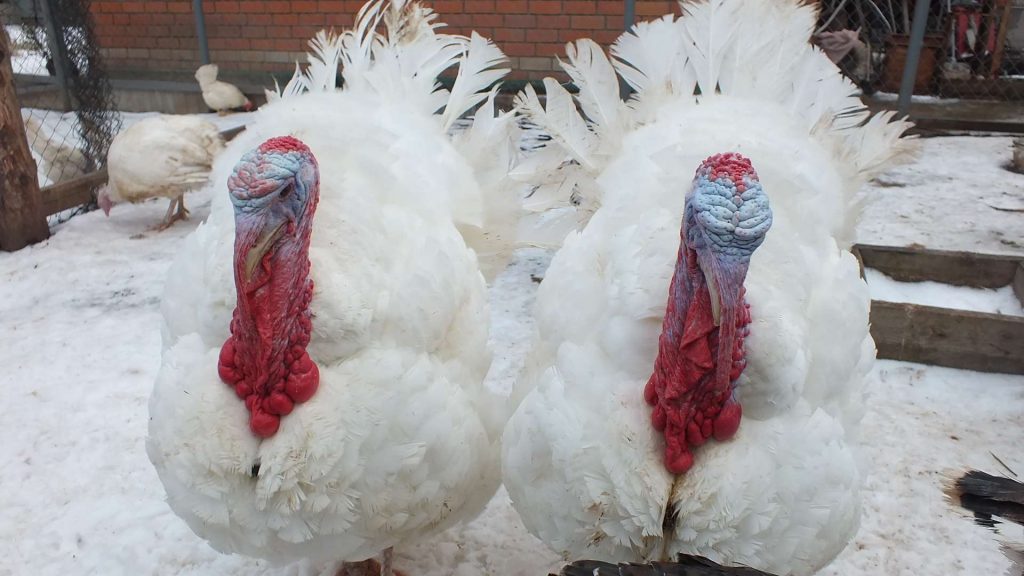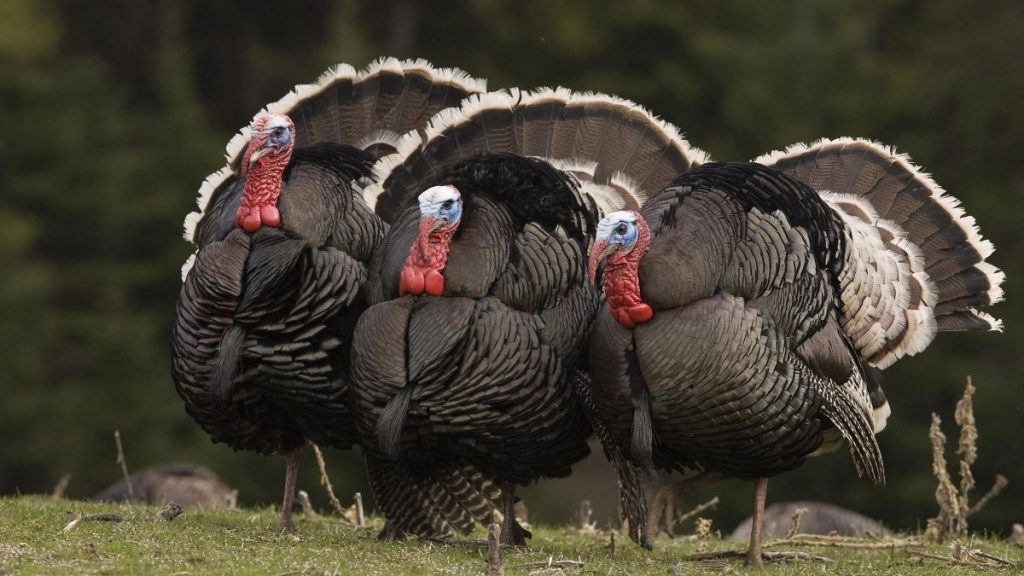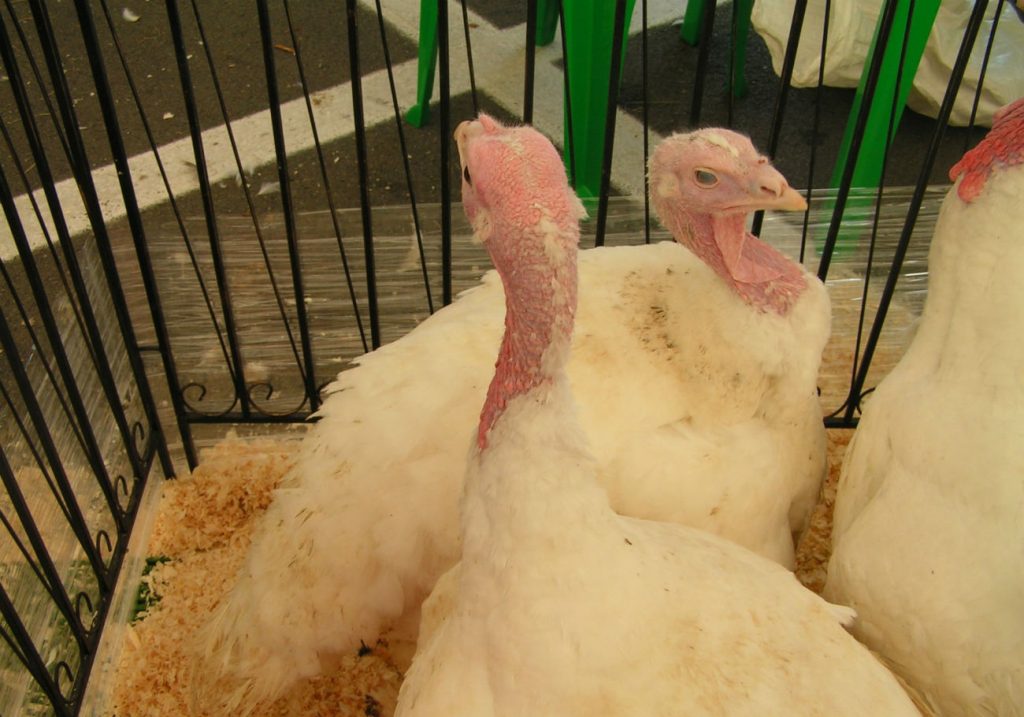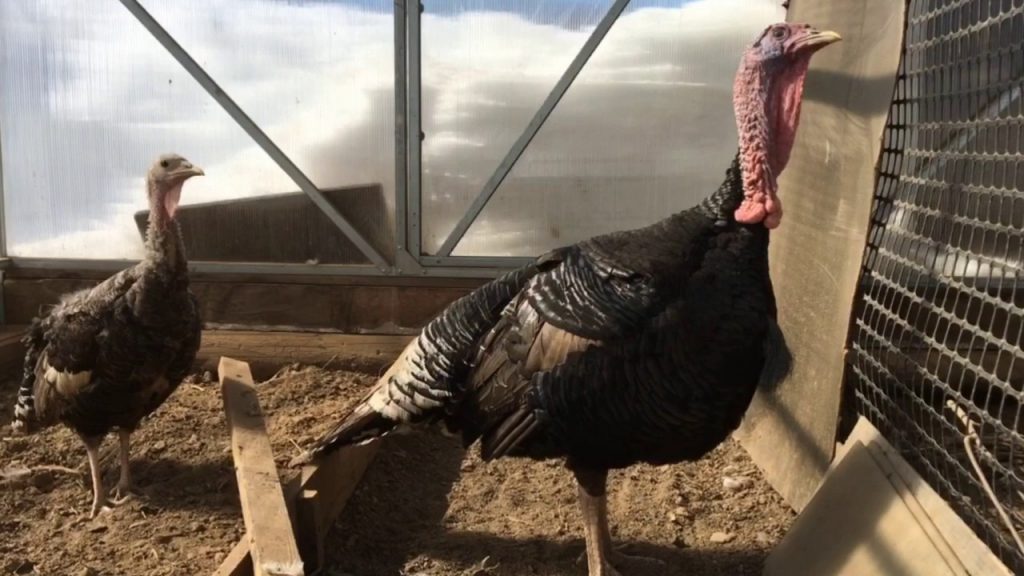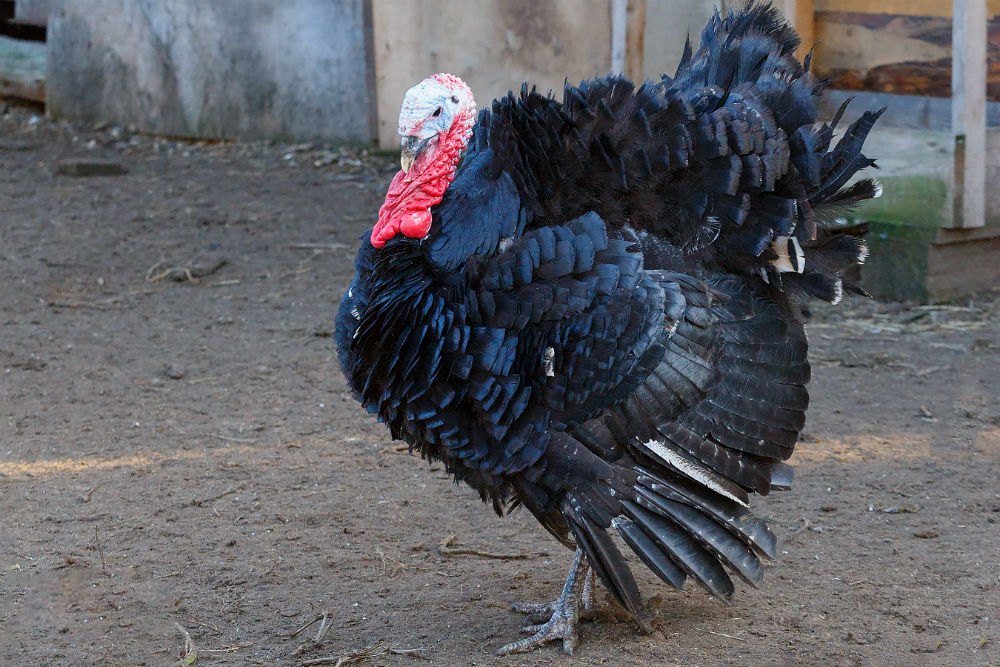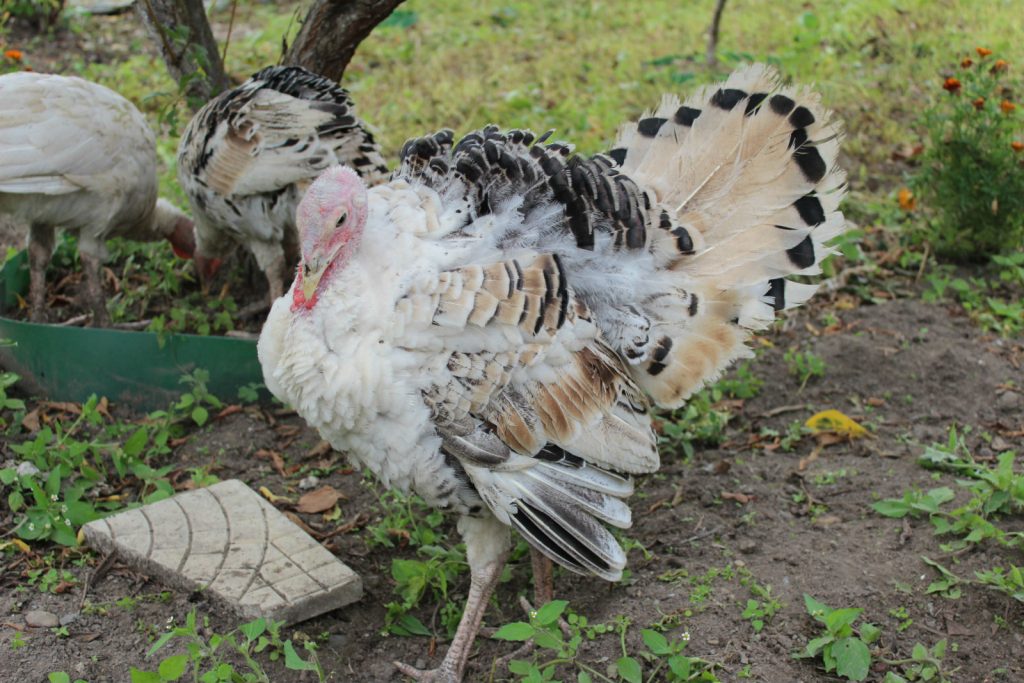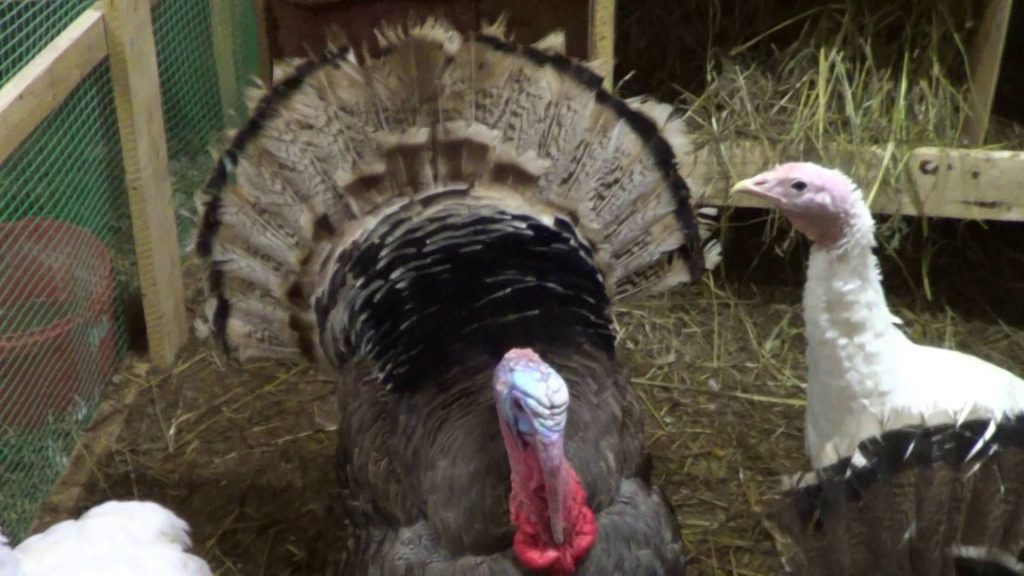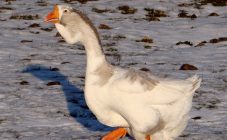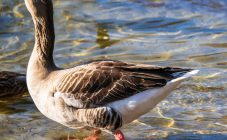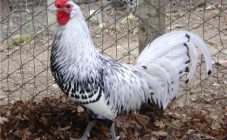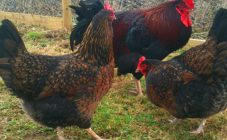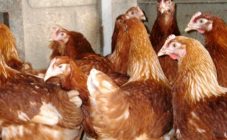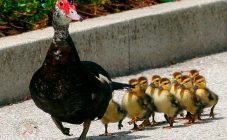Content:
Turkeys were first domesticated in America, and soon the wild turkey (wild), which became domestic, spread throughout the world. Over time, experienced breeders have bred many species from one - wild turkey, which are classified based on the quality of meat, egg production and other characteristics.
The breeds of turkeys are very diverse, but large-scale breeding work began in the last century, after which wide-breasted American breeds began to appear, broiler varieties, which at the time of slaughter grow to 26 kg on average. Apart from broilers, there are also decorative species - Blue Turkey, or Aspidny, Silver Turkey, Fawn Turkey, Black Turkey.
Breed classification
There are not so many varieties of turkeys as chickens, about thirty species. All of them are widespread throughout the world, 13 are grown in Russia.
Today, ocellated turkeys carry a number of distinctive characteristics, among which are not only plumage and color, but also:
- quantity and quality of eggs;
- the amount of time during which the maximum mass of poultry for slaughter is reached;
- poultry weight, how much meat in percentage terms it gives.
Despite the fact that there are not many turkey breeds for breeding at home, poultry farmers prefer them for the reason that they are adapted for grazing. They are unpretentious, gain weight in the shortest possible time, and when choosing turkey food, you don't have to be sophisticated.
The most common meat breeds
What breeds of turkeys are most in demand at the present time? There are a number of varieties in demand.
White broad-breasted turkeys
The turkey species was first bred empirically in the United States, and is still the leader among the rest. The main characteristics that make the breed popular:
- fast meat ripening rate, up to 75 percent of the entire carcass;
- a large number of eggs, up to 110 per year, on average;
- the carcass in males is close to an oval shape, the back is wide, the chest is protruding forward;
- plumage dense and marbled, complete absence of dark feathers, except for a small area on the chest;
- long strong legs of a pinkish hue.
The bird gives three lines: heavy and crosses, up to 24 kg males, females - 10 kg. The middle line is characterized by males, on average, weighing 14 kg, and females - at 6. Light representatives reach small sizes - a maximum of 7 kg for males, 4 - for females.
Moscow bronze turkeys
This type of turkey was bred as a result of mixing breeds of broad-breasted bronze and common local birds. It is characterized by certain qualities:
- wide bulging chest;
- elongated body;
- good endurance;
- great for grazing;
- male representatives of Moscow bronze can reach 20 kg, and females - 9 kg.
Cross BIG 6
Another variety of turkeys in great demand is BIG 6, a foreign bird, in other words - British United Turkeys. Scientists from Britain and Canada became its pioneers. Qualities:
- usual high productivity and heavy weight;
- strong neck, while long;
- protruding chest, in some, especially strong representatives, reaching one third of the total body weight;
- strong back, no hump;
- long legs of a yellowish tint;
- plumage is snow-white, with the exception of a small speck in the chest area.
They are very rapidly gaining muscle mass, by day 150 they already reach 10 kg. By the time of final ripening, the bird can gain up to 28 kg, while the meat is not fat, but dietary.
Hybrid converter
Another breed of turkeys, the Hybrid Converter, was brought directly from Canada. Compared to the Hybrid grade maker, this variety has a high rate of weight gain. The description of the converters is also different from Grade Maker turkeys:
- the similarity of the latter with ostriches, as a result of which they are often called Indostraus;
- Highbride males can gain weight up to 21 kg, and females up to 11 kg;
- weight gain rate - 4 months;
- representatives of this species begin to lay eggs at 9 months, about 50 pieces come out in 12 months.
The care and feeding of Canadian broad-breasted turkeys does not differ from other varieties.
Cross BYuT-8
Snow-white turkeys with wide breasts are representatives of the BYuT-8 cross variety. This bird does not have any special dietary preferences; within six months, males can gain about 20 kg, and females - 10 kg on average.
If you feed this bird regularly and in a balanced way, while providing the opportunity to walk less often, you can achieve that there will be a lot of dietary meat, while gaining mass quickly enough.
Egg breeds
There are also egg breeds of turkeys, which are bred by the owners to a greater extent precisely because of egg production, they belong to small breeds.
Virginia
Some poultry breeders also call this bird Dutch. Virginia turkey is characterized by:
- snow-white plumage;
- small size;
- the maximum weight of a male is about 10 kg, of a female - 5 kg;
- a turkey can produce about 55 eggs in 6 months.
Bronze breed of turkeys
The most common breed of turkeys. This bird got its name precisely because of its color. The characteristics of the bronze rock are as follows:
- males are black, a bronze line is visible on the back, the maximum weight is 17 kg;
- females are edged in white, the rest of the body is not as flashy as in males, the maximum weight is 9 kg, about a hundred eggs per year.
These birds can live in open enclosures. Representatives of this breed are characterized as very hardy birds, while the egg production of females is no less good.
White Moscow
Their appearance is similar to the BIG-6. In the chest area there is a white stripe, also a black spot. The male reaches a maximum of 15 kg, the female - 7 kg. They grow the White Moscow house, easily endure a change in environment and temperature.
Cross BIG-9
Hardy and not having special requests breed of birds. In a short time, it can gain a lot of weight, while the females rush very well. Males reach 16 kg, and females are on average half that size. At the same time, she brings a little more than 110 eggs per year. More than half of the eggs are incubation eggs.
Cross Headon
This variety came from the Netherlands, is characterized by a snow-white color, and the scallop on the head is elongated. Gains weight well, is unpretentious in food. Male representatives - 19 kg, female representatives - 15 kg on average.The latter, among other things, can produce about a hundred eggs per year.
Tikhoretskaya Black
It first appeared in the Krasnodar Territory in the middle of the last century. A lightweight breed that can be bred both in a cage and in open areas. The percentage of dietary meat obtained from the carcass is 60%.
The weight of the male reaches an average of 9 kg, the females are half that, they also produce about a hundred eggs per year. Maximum weight is reached by 5 months.
Mixed breeds (egg and meat)
Some poultry farmers decide to kill two birds with one stone - to start a breed that gives a good dietary turkey meat, while egg production is at a high level, like a chicken crossed with a turkey.
Cross Wagon
The snow-white bird appeared in the North Caucasus about 10 years ago, then became widespread. Mountain representatives are rapidly gaining weight, while consuming a relatively small amount of feed.
Males reach 17 kg, females - 9. Egg production is no less good - 65 eggs per year, while only 10% remain unfertilized.
North Caucasian Bronze
A breed of North Caucasian turkeys that appeared in the second half of the last century. North Caucasian turkeys are distinguished by their large sizes, while all representatives are unpretentious to different weather conditions and habitats.
Males can reach 15 kg, while females - 6. The latter produce a large number of eggs.
Uzbek Palevaya
This is not a hybrid of a chicken and a turkey, but the requirements for this individual are very minimal. In any pasture conditions, representatives of this breed are able to find food for themselves and lay eggs. There are a large number of fans of this breed, although they give little meat.
The adult female reaches 5 kg, the male - about 9. The turkey brings about 55 eggs per year.
The main characteristics of birds of different breeds
Among all the breeds mentioned, males of meat: broad-breasted white gain 22 kg, Moscow Bronze - 20, BIG-6 - 24, Highbrid Converter - 20, BYuT-8 - 27. Females of the same variety gain / lay eggs: Broad-breasted White - 10 kg / 80, Moscow Bronze - 10/80, BIG-6 12/100, Hybrid Converter - 10/80, BYuT-8 - 10/90.
Males of egg breeds bring meat: Virginskaya - 9 kg, Bronze - 18, Belaya Moskovskaya - 16, BIG-9 - 17, Tikhoretskaya Chernaya - 10, Khidon - 20. Females bring meat / eggs: Virginskaya - 5/12, Bronze - 10 / 100, Belaya Moskovskaya - 8/120, BIG-9 - 9/120, Tikhoretskaya Chornaya - 5/100, Khidon - 16/100.
Mixed breeds of turkeys bring meat, in the case of males: Universal - 18 kg, Uzbek Palevaya - 10, North Caucasian Bronze - 14, North Caucasian White - 14. Females bring meat / eggs: Universal - 10/70, Uzbek Palevaya 5/60, North Caucasian Bronze - 7/80, North Caucasian White - 8/90.
What breeds of turkeys should be bred
Considering that basically the choice falls on turkeys with a lot of meat, you should make a choice in favor of crosses, namely:
- BIG-6;
- Khidon;
- BYuT-8.
Breeding them does not require a lot of experience in working with birds. It is simply recommended to provide stable food and comfortable conditions.
Weight gain in turkeys
Those seeking to control weight gain should weigh themselves every day. This helps to understand if the birds are eating well and how quickly they are gaining weight. In the first 8 weeks, the bird begins to gain only a few hundred grams, then, closer to the end - already by a kilogram or more, as a result of which the female reaches 3 kg by 8 weeks, and the male - 4.
After that, the rate of recruitment begins to decline, by the 16th week, males begin to weigh already 12 kg on average, and females - about 9. During this period, the sale of dietary meat already begins.
Thus, raising turkeys is a very profitable business. In addition to high-quality dietary meat, the owners receive a large number of eggs, most of which are fertilized.
